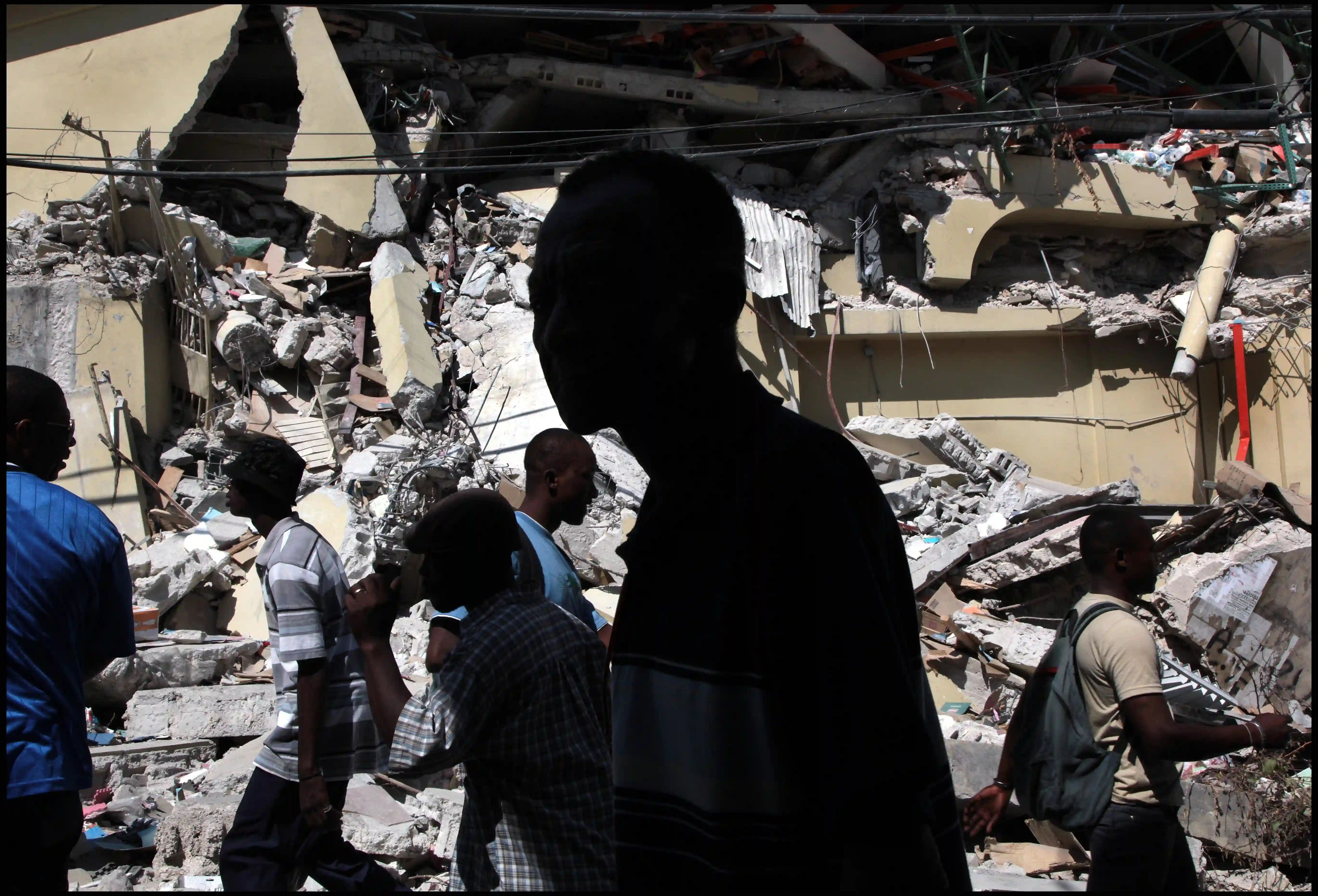One decade after a 7.0-magnitude earthquake rocked Haiti, we look back on the days and months after January 12th, 2010.
Support Concern's Work In Haiti
On January 12th, 2010 at 4:53 in the afternoon, a massive earthquake rocked Port au Prince, capital city of the Caribbean nation of Haiti. The catastrophic event killed an estimated 230,000 people, injured hundreds of thousands more, and left as many as 1.5 million people homeless.
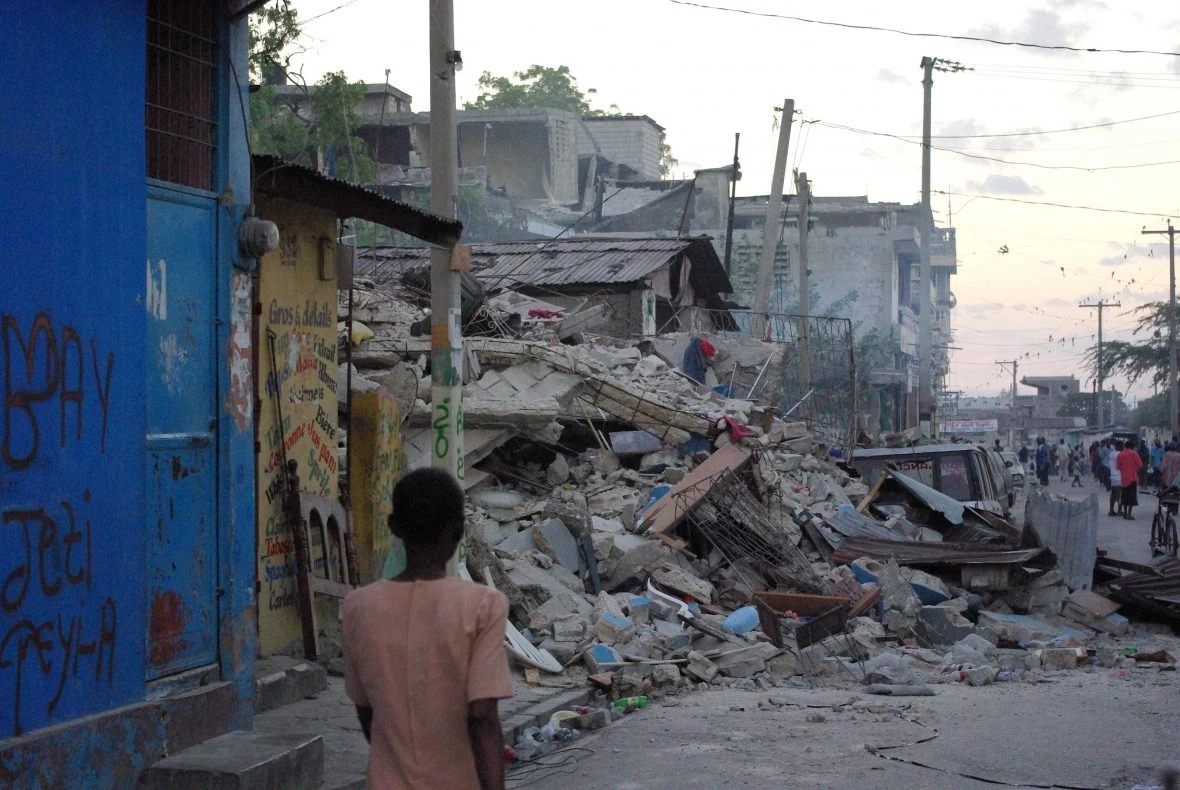
In Haiti, the poorest and most vulnerable communities are relegated to the cheapest and most precarious land, like this sheer hillside in Bourdon, Port au Prince. Compounding that risk in 2010 were poor building practices using cheap and faulty materials. The images of near complete devastation in Bourdon and communities like it served as shocking, indelible visual symbols of the unimaginable loss so many suffered.
This is a snapshot of Concern Worldwide's response in the months that followed.
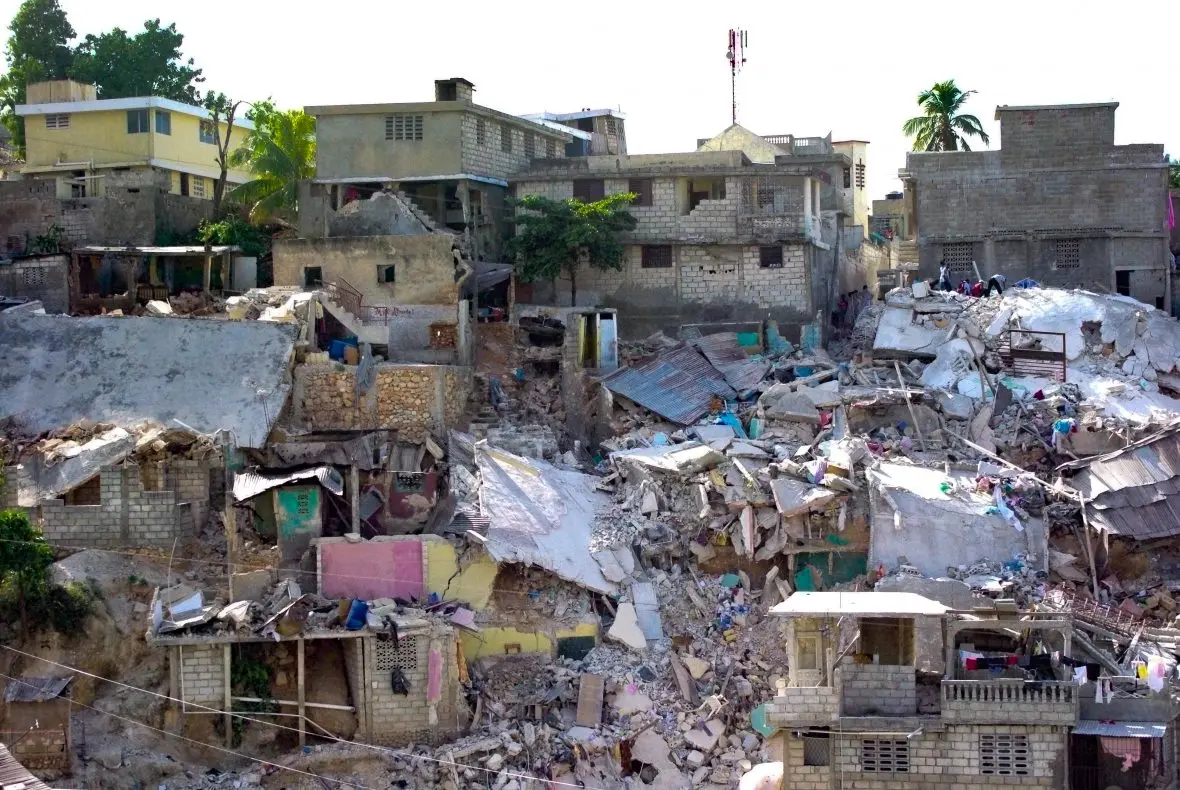
Concern in Haiti: A long humanitarian history
Concern had been working in Haiti for 16 years, and by 2010 had grown a robust, holistic program encompassing humanitarian relief and a range of development activities.
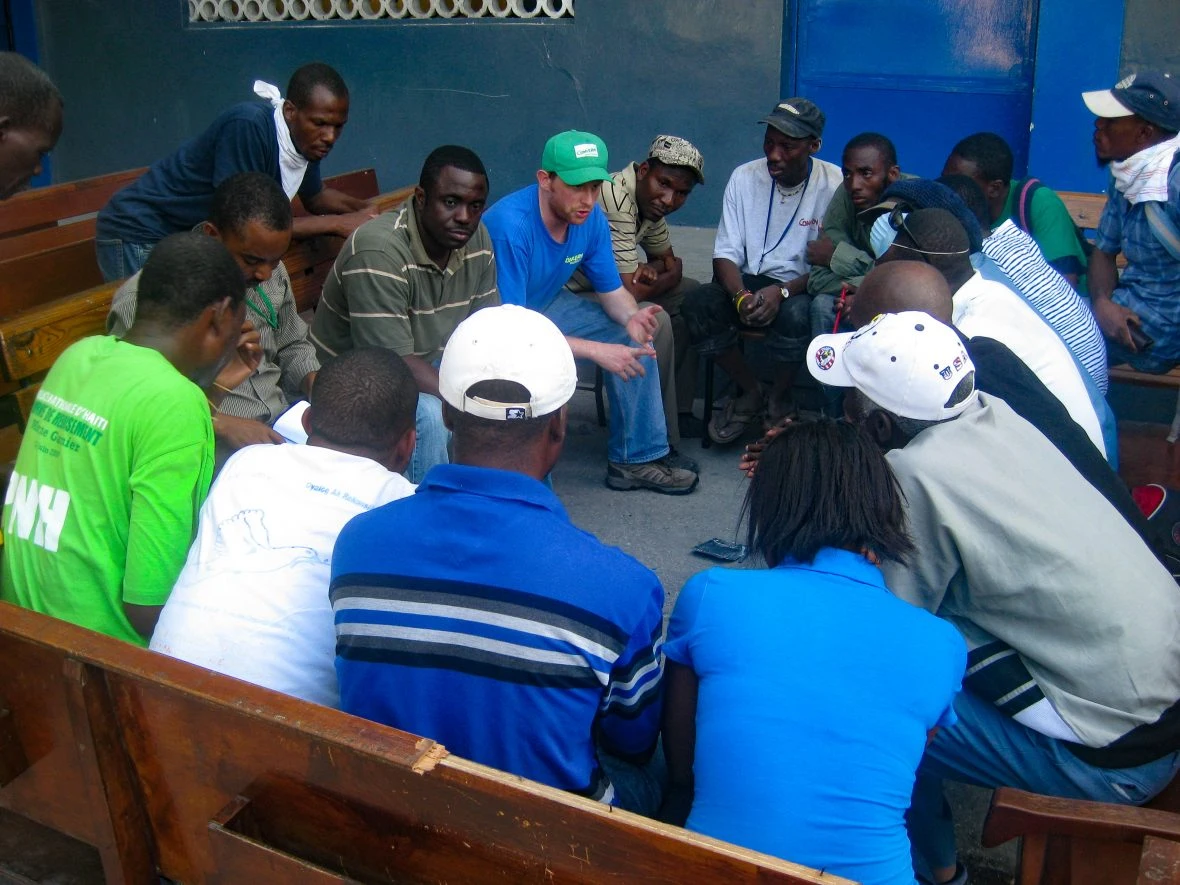
A large and experienced team suddenly found themselves and their families at the mercy of one of the most destructive disasters in recorded history. Still, within 48 hours, almost all had reported for duty at the Concern office, which had survived the quake relatively unscathed.
Swinging into action
A massive relief effort swung into action, with international first responders and heavy equipment arriving through the heavily congested and partially damaged Toussaint L'Ouverture International Airport. It would be closed to commercial flights for weeks, but aid shipments and personnel arrived around the clock.
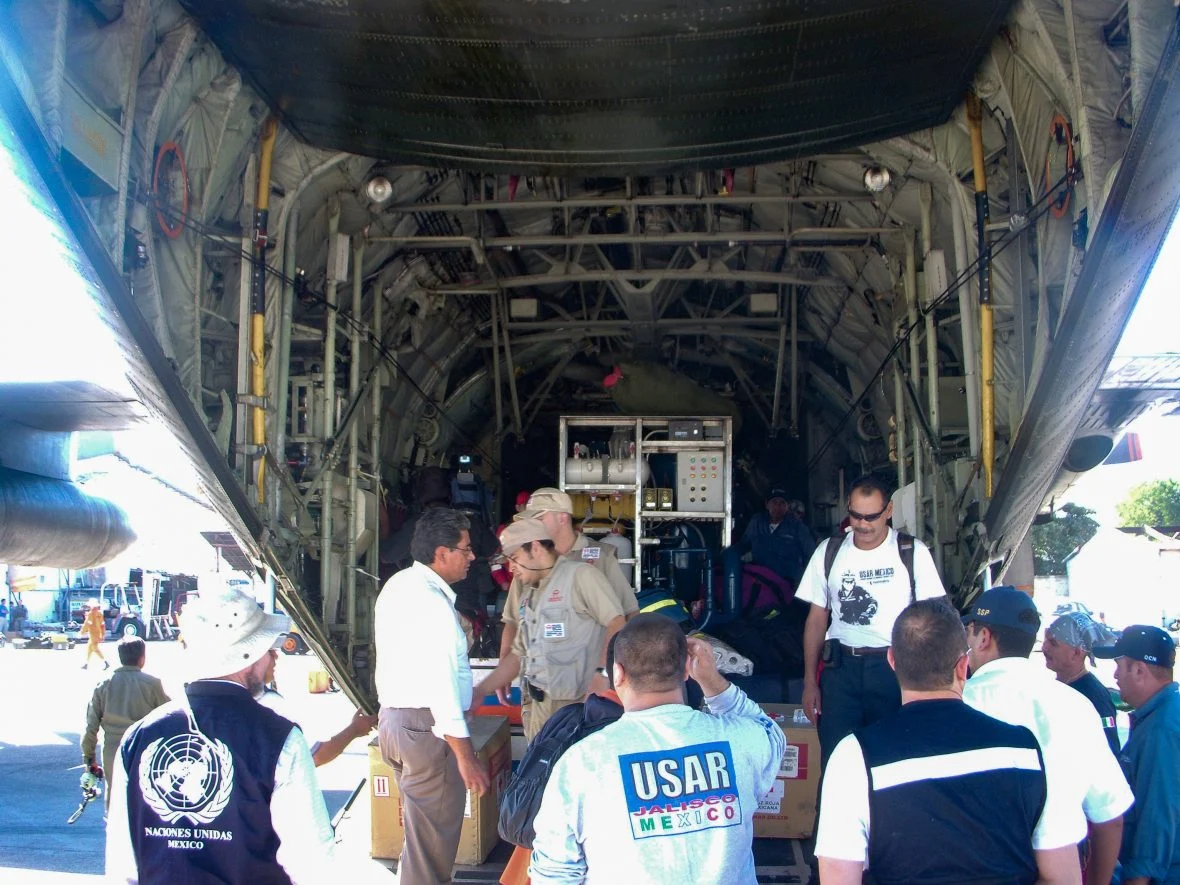
Part of that international effort was the deployment of a large-scale U.S. military joint task force. More than 17,000 troops cycled through Haiti between January and March, 2010. In dense urban communities, such as Saint Martin, they provided security at distributions, in this case the first delivery of essential shelter and household items to thousands of residents.
As humanitarians, working with armed security is always an option of last resort, but the relevant authorities and colleague organizations agreed it was required amidst the early chaos and insecurity. As Haiti emerged from the most acute phase of the disaster, a well-coordinated system of distributions was put into place, the risk of insecurity lessened, and military assistance would no longer be needed.
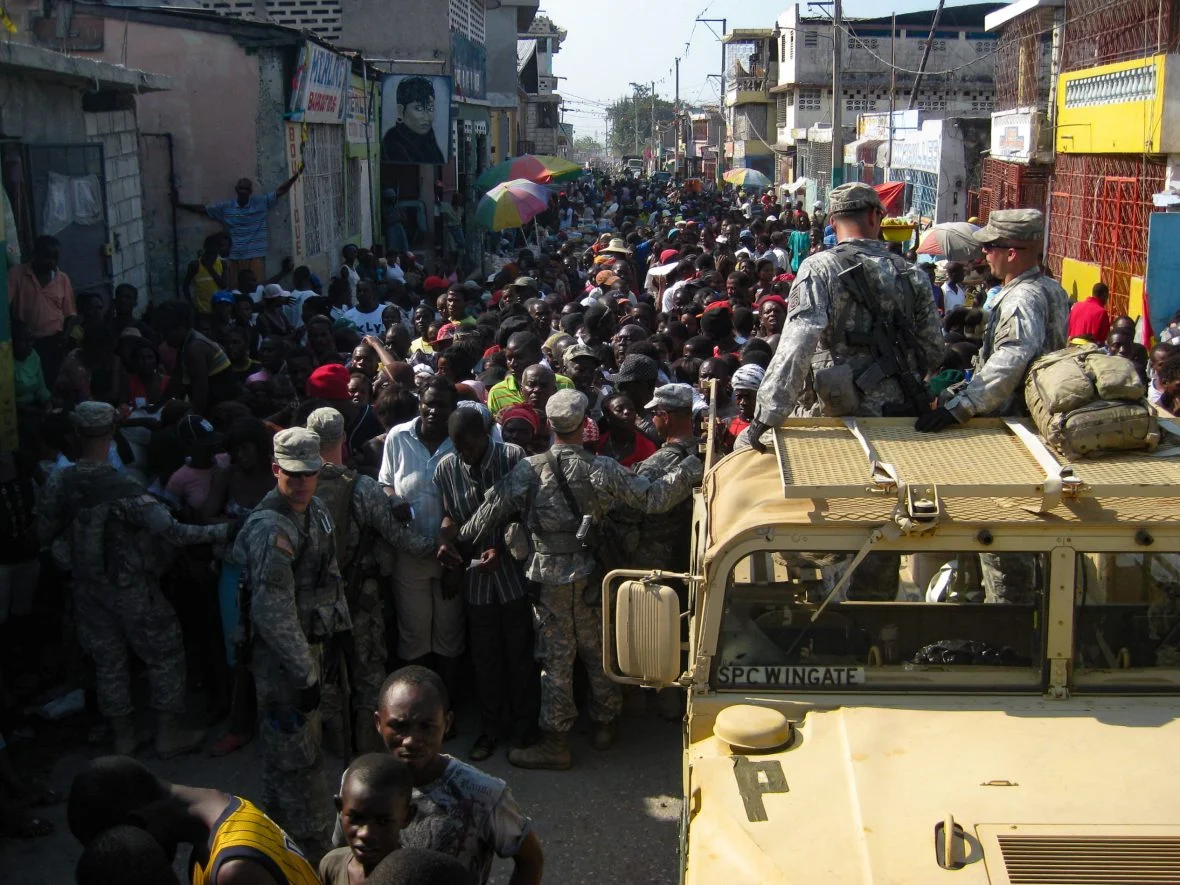
Clean water infrastructure and systems that had existed before the earthquake were almost completely destroyed. In the immediate aftermath, tanker truck deliveries often resulted in long lines, such as this one in Port-au-Prince’s Bel Air neighborhood, but soon Concern’s WASH team would construct a network of temporary water points that improved access.
Answering the call and building the team
Dominic MacSorley, now CEO of Concern Worldwide, was among the first wave of emergency workers to arrive in Port-au-Prince and directed the early phases of the response. The team was bolstered by engineers, logisticians, health, nutrition, water and sanitation, education, livelihoods, and psychosocial support specialists. In all, 40 of the organization's most experienced staff from around the world came to join the effort, and our Haitian staff grew to more than 200.
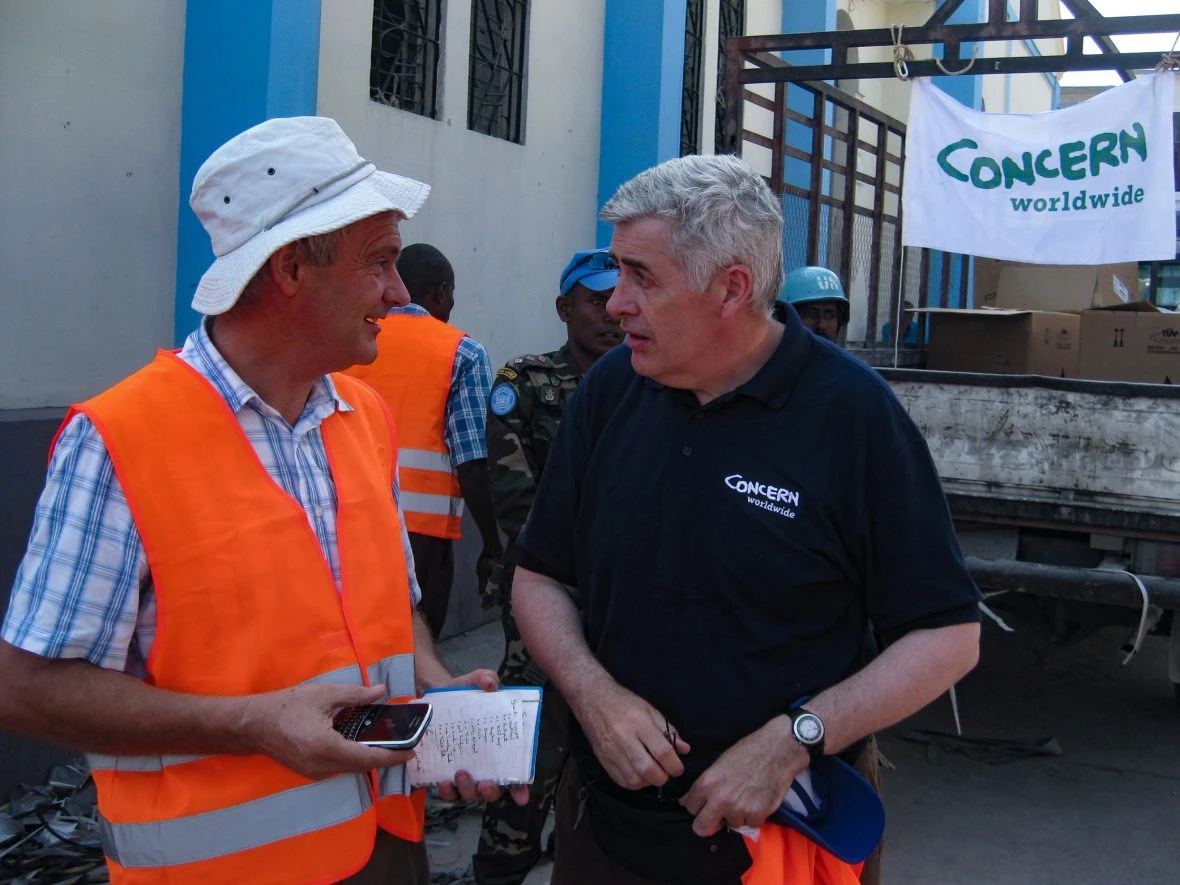
A key early intervention was a nutrition program that saw emergency nutritionist Bernadette Feeney deployed to a tent on the grounds of the destroyed National University Hospital. It was part of a multi-agency effort to safeguard the health of the most at-risk infants and newborns. Access to such expert healthcare enabled the treatment of children like Johnsley Pierre, who had suffered from malnutrition before the earthquake.

Facing a new reality
Millions of Haitians found themselves confronted by a desperate new reality. Concern's team dug in for a vast and prolonged relief and recovery effort that would reach 130,000 people in the initial phase of the response, and hundreds of thousands more in the years to come.
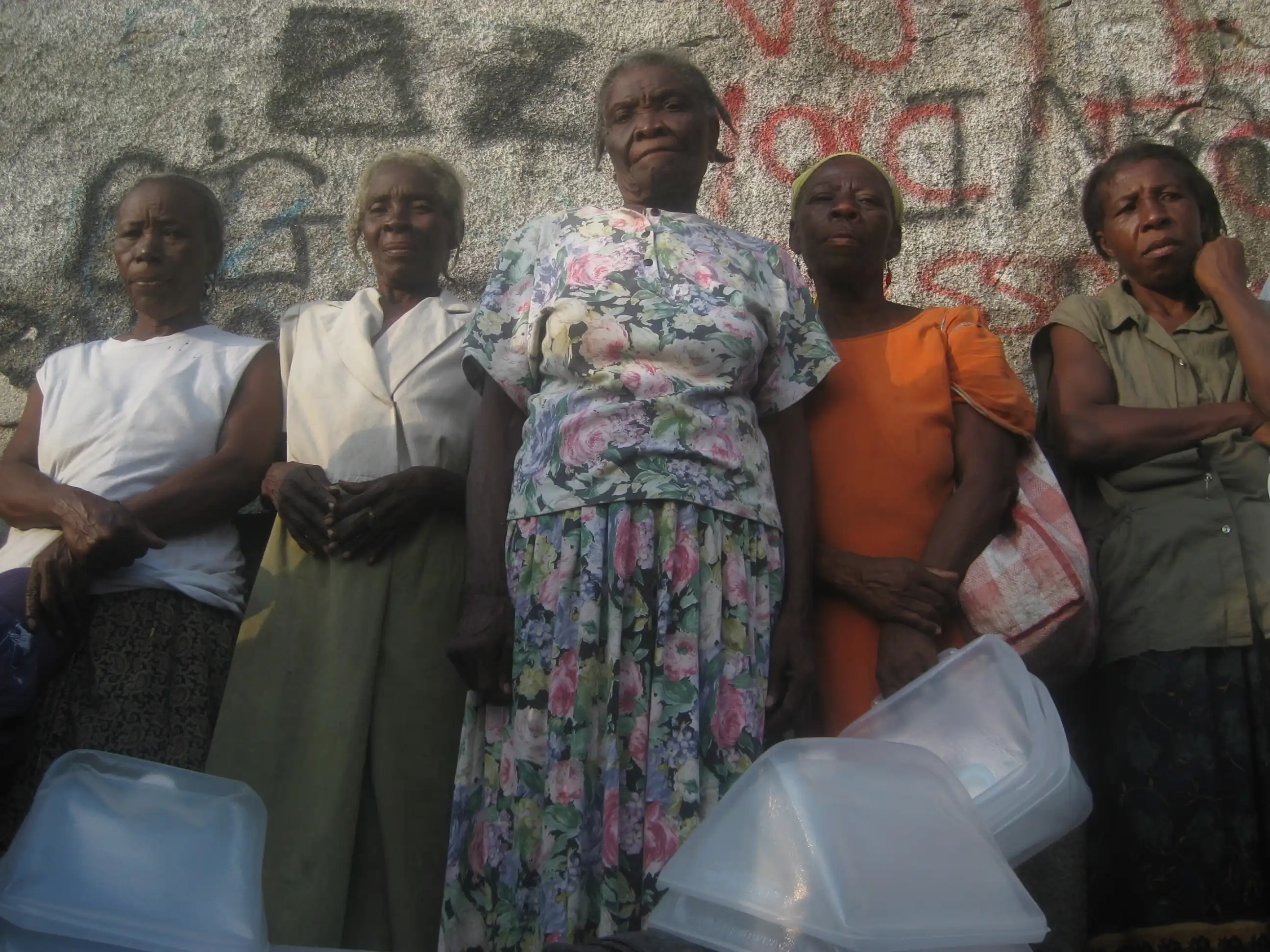
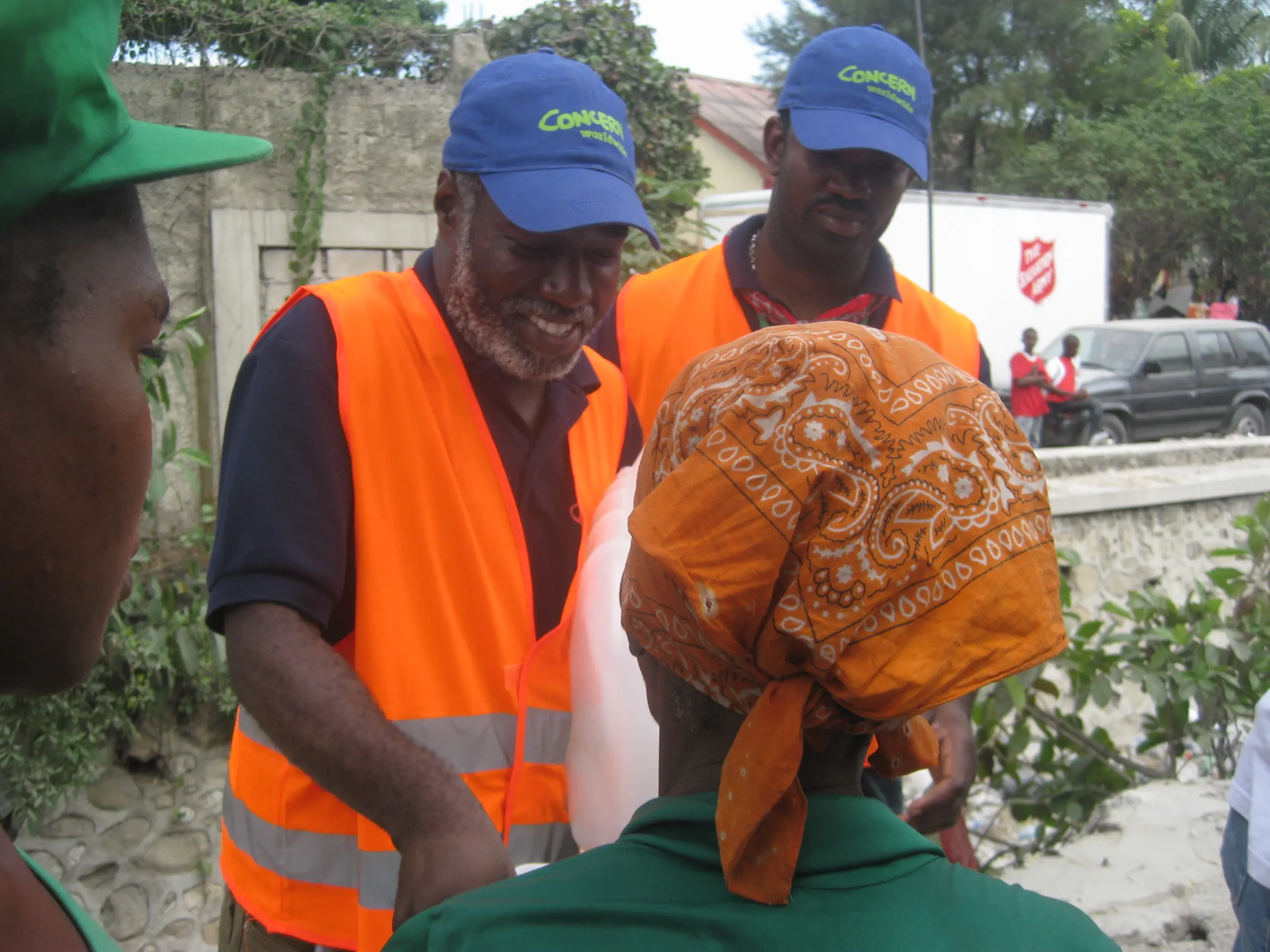
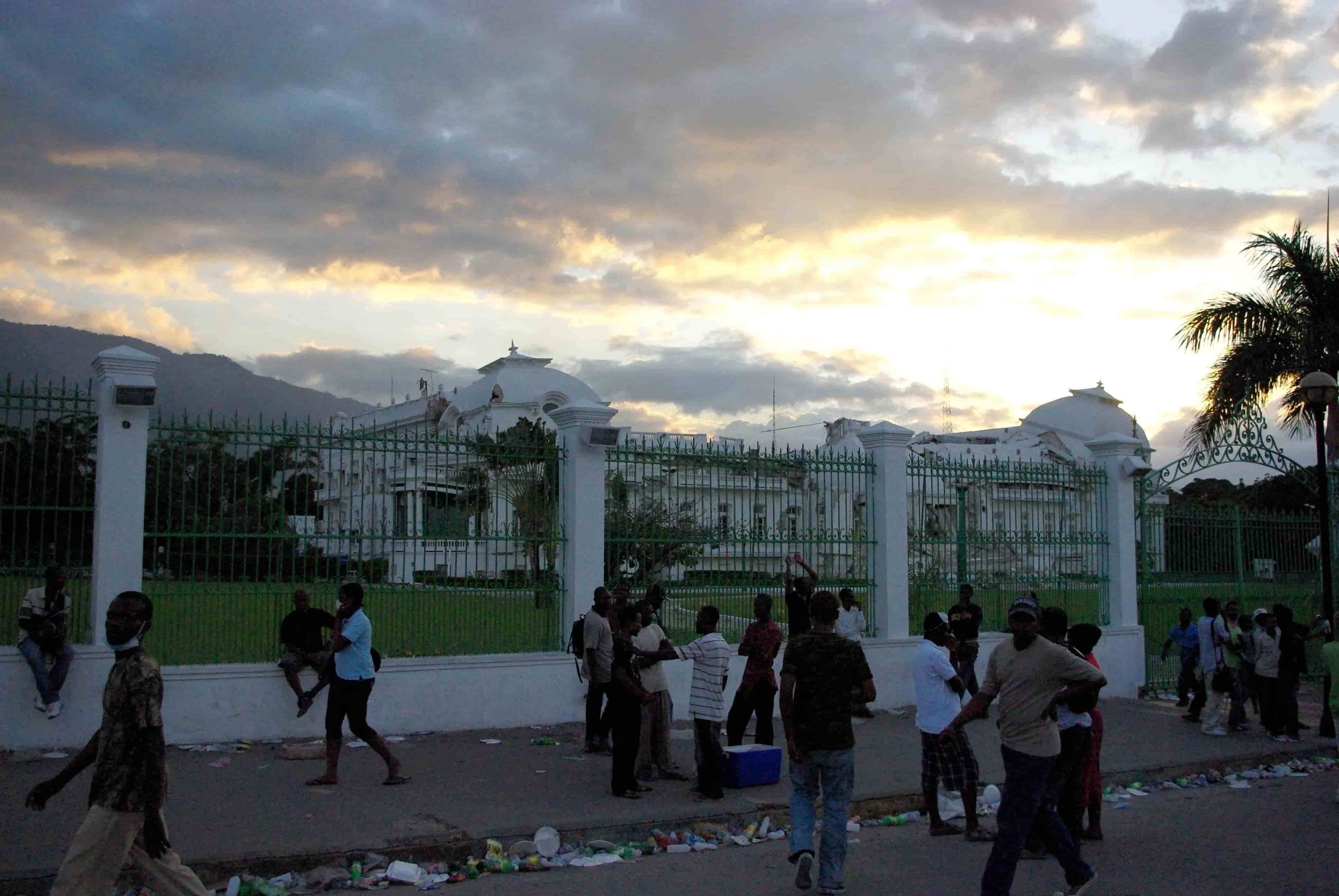
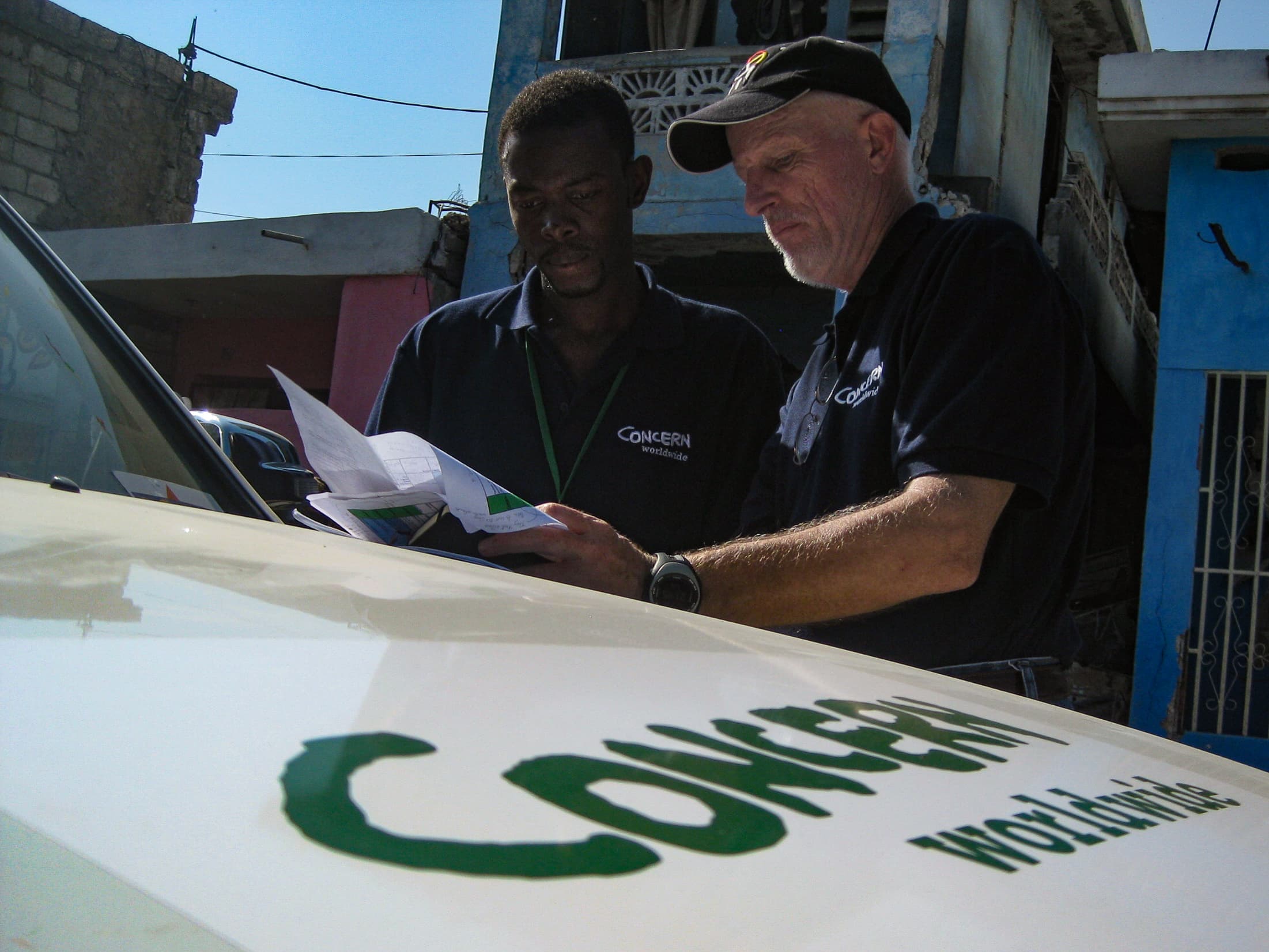
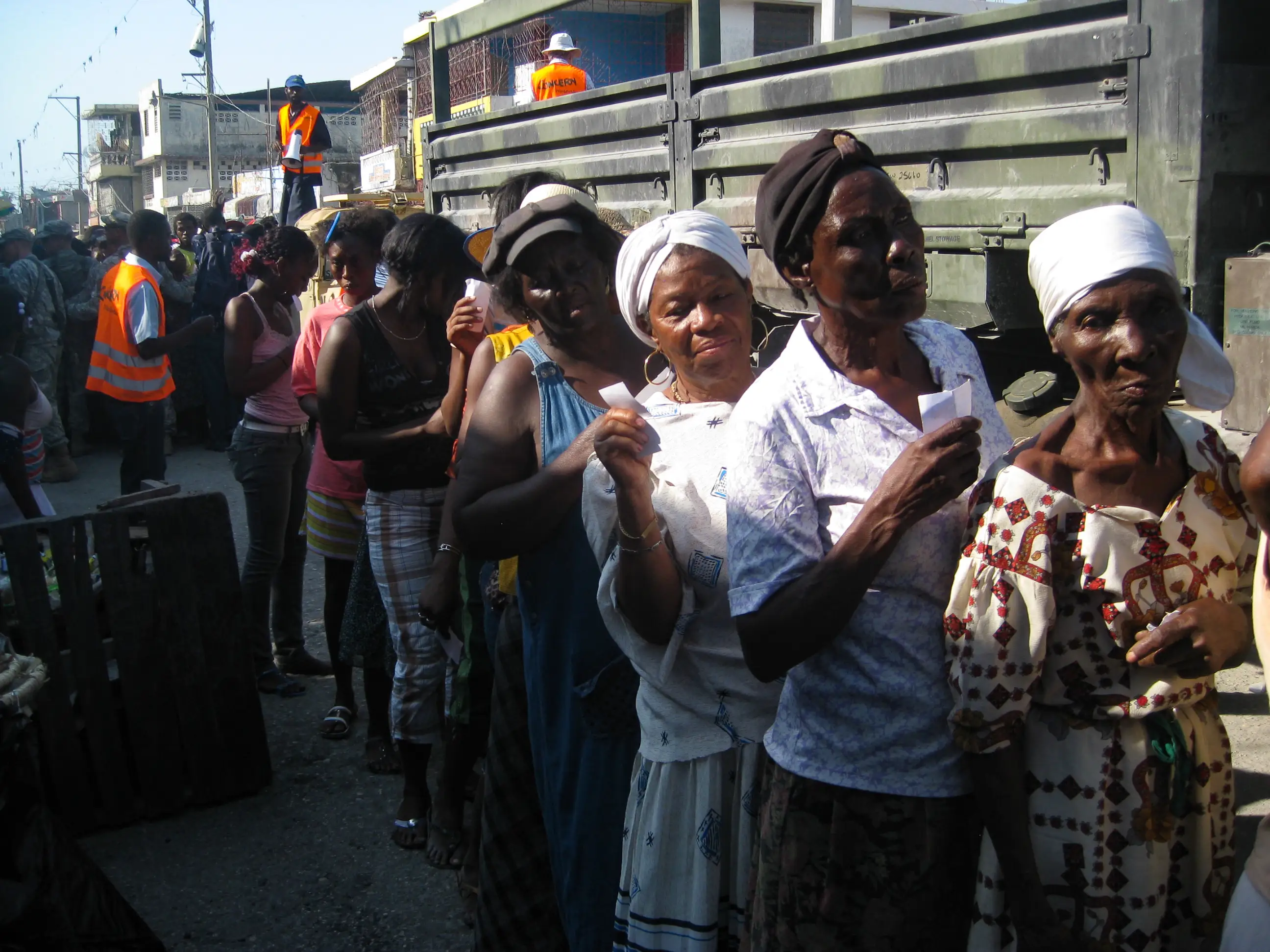
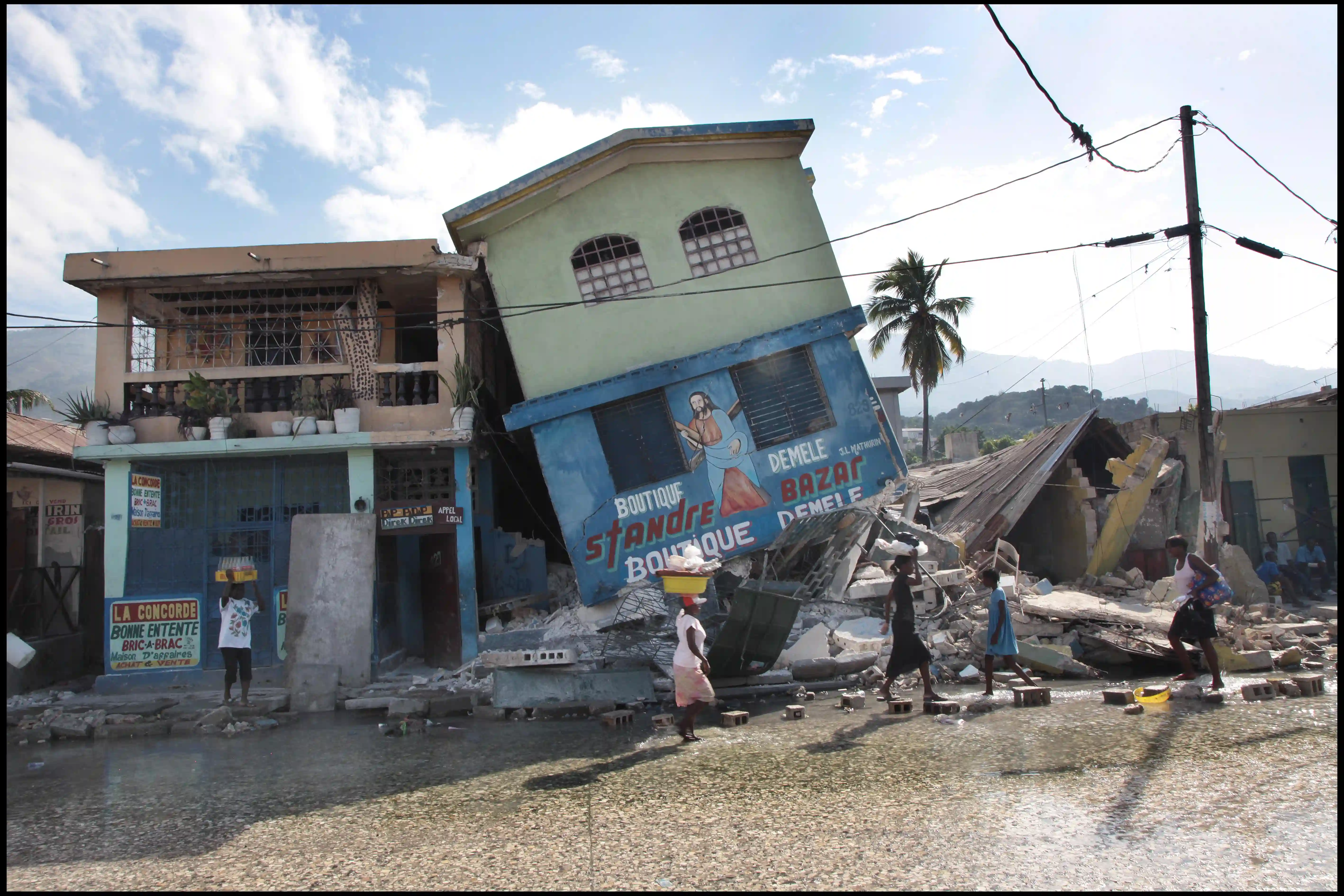
Destruction in urban Port-au-Prince displaced tens of thousands to rural areas, placing added pressure on already vulnerable communities further jeopardized by closed markets and interrupted supply chains. Concern managed a complex, multi-week air response that included several helicopter deliveries each day to inaccessible areas of Saut d'Eau and the island of La Gonave. Concern logistics manager Jimmy O'Connor coordinated much of the effort with the UN Humanitarian Air Service (UNHAS).
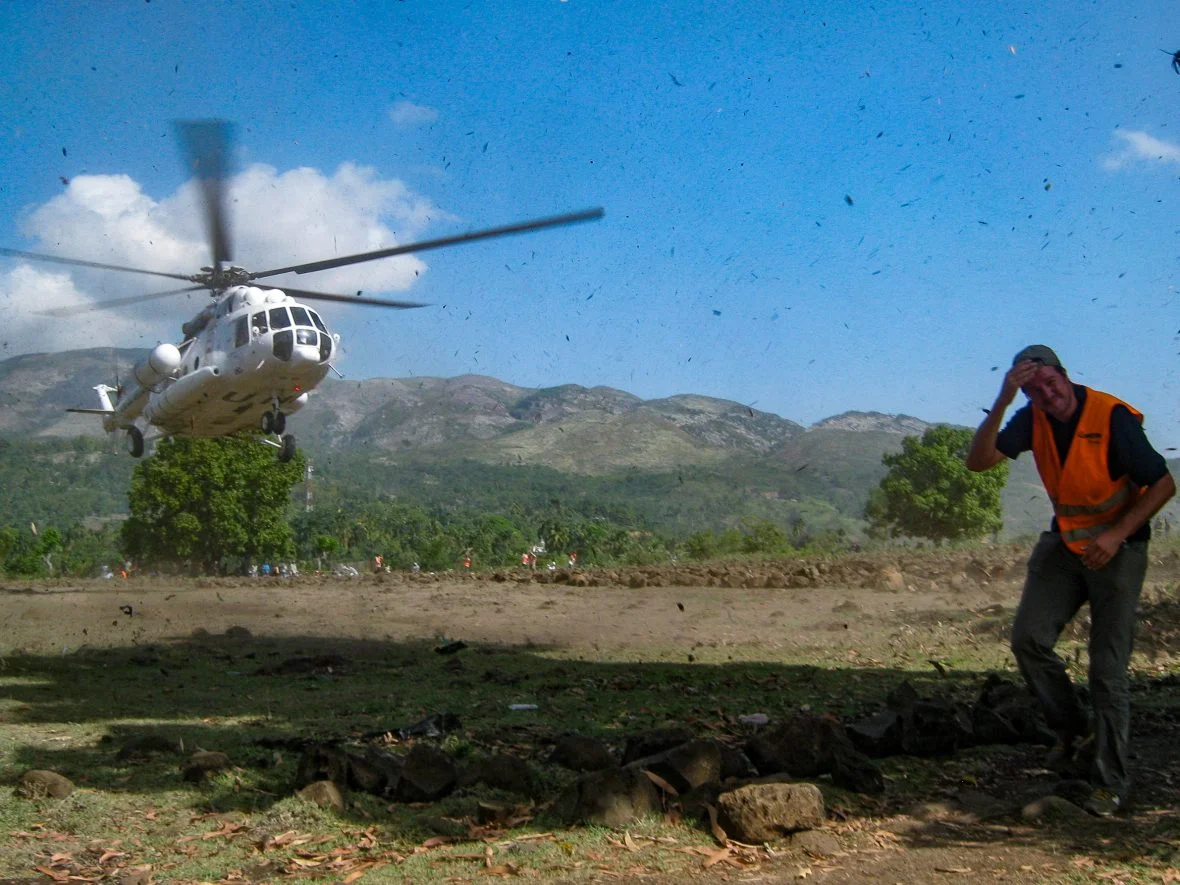
La Gonâve: Haiti's forgotten island
The island of La Gonâve experienced an influx of thousands of people to what was already one of the most vulnerable places in the country. We led a response there that came with major logistical and accessibility challenges, which created a need to improvise in the "whatever it takes" spirit of Concern — even loading a 3-ton land cruiser onto one of the island's ferry boats.
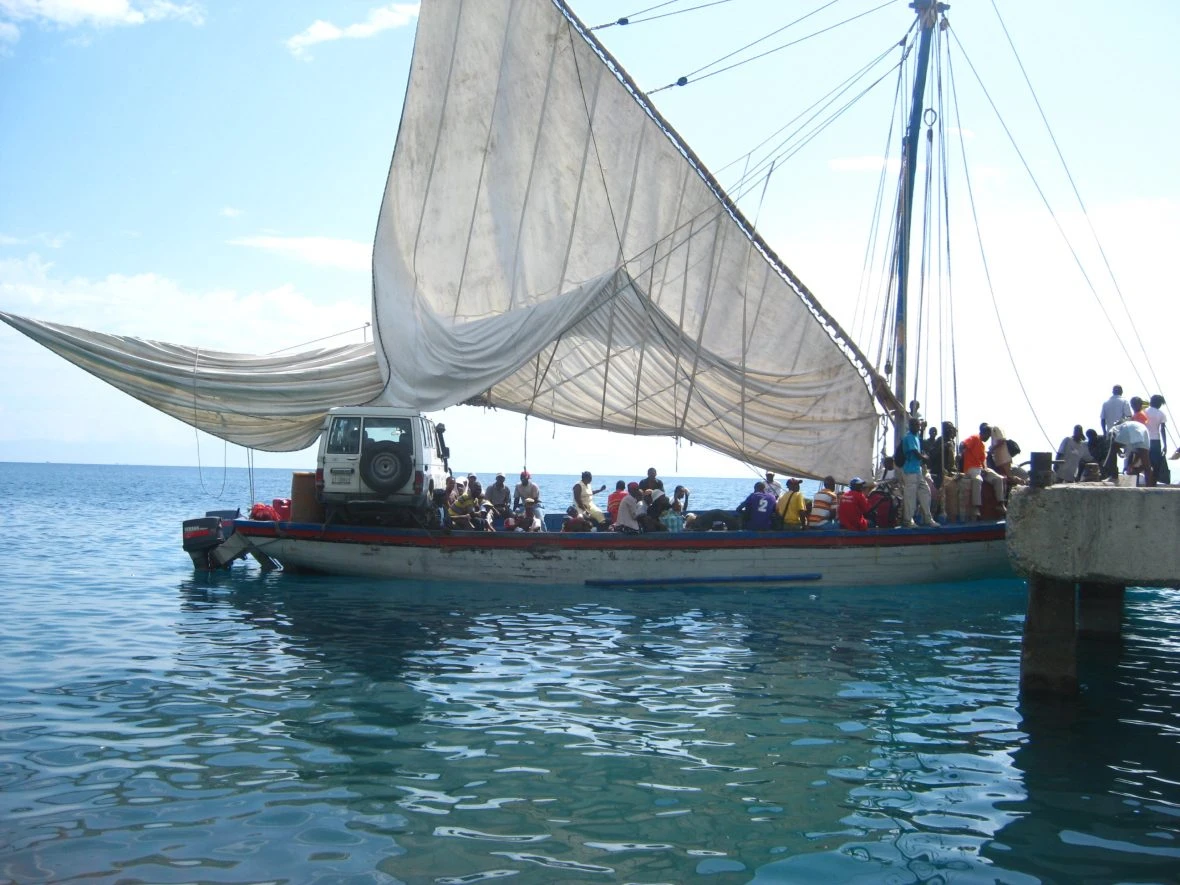
Distributions of essential health, household and shelter items continued throughout 2010 in some of the most densely populated urban areas and most remote rural zones.
New York-based Ed Kenney worked with Haitian colleagues like Katia Antoine to capture the story of unprecedented need and response. He would soon be re-deployed to manage aid distributions for several months before returning to the U.S. Katia became a stalwart of the Concern Haiti team for the next 10 years.
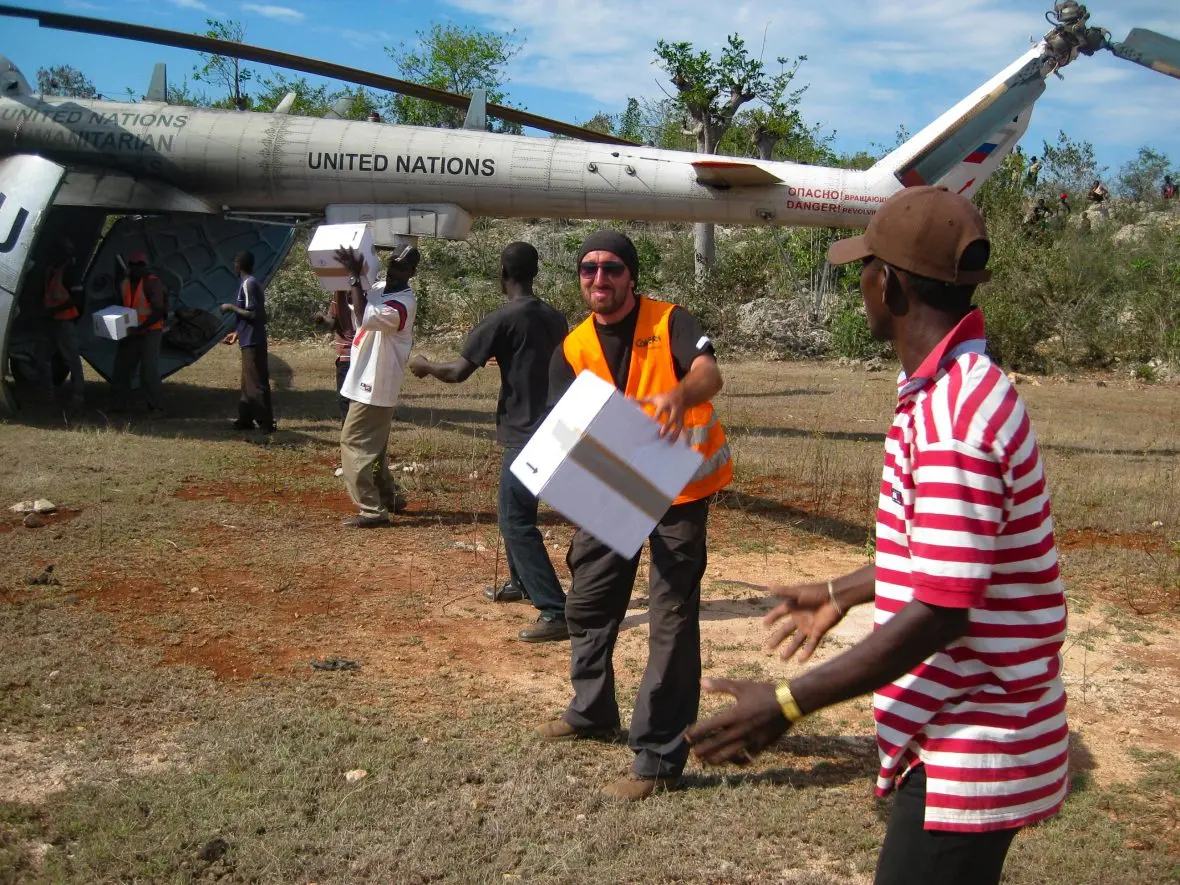
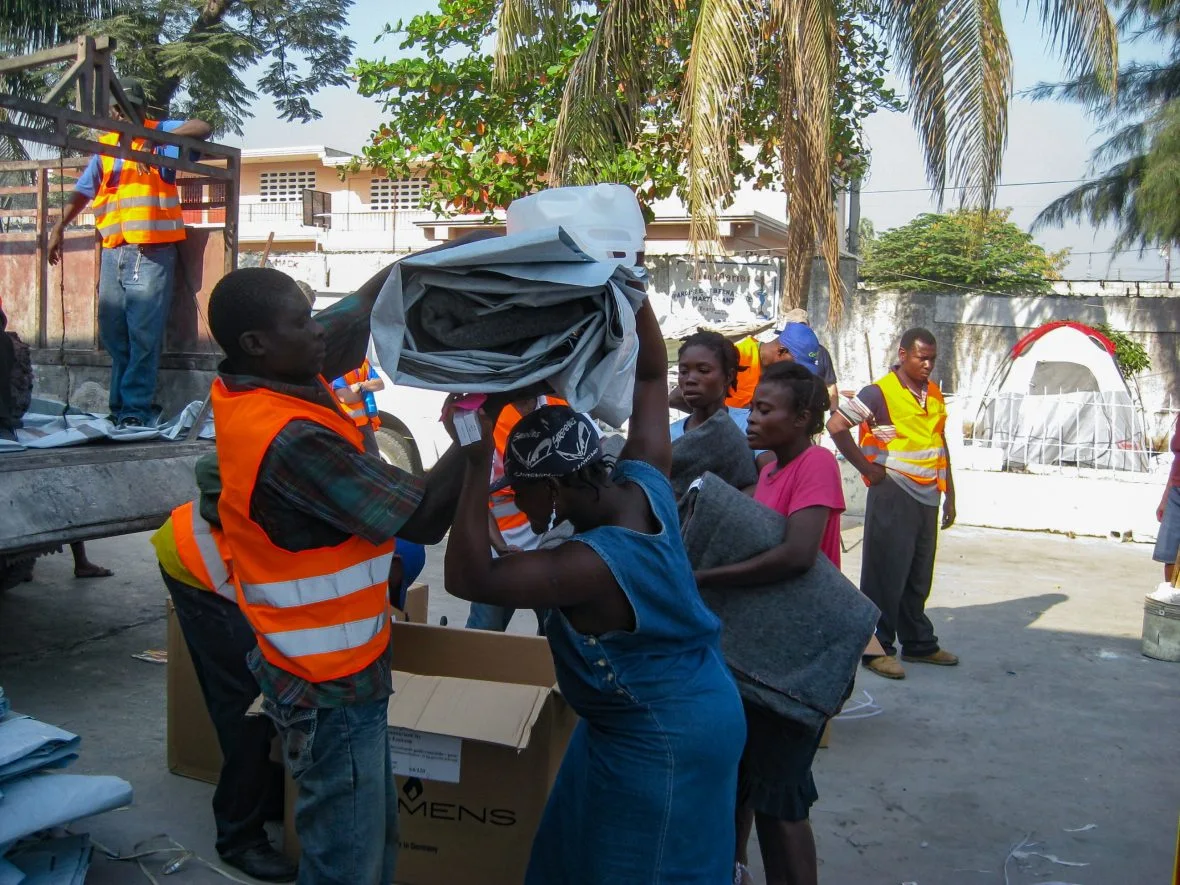
New York-based Ed Kenney worked with Haitian colleagues like Katia Antoine to capture the story of unprecedented need and response. He would soon be re-deployed to manage aid distributions for several months before returning to the U.S. Katia became a stalwart of the Concern Haiti team for the next 10 years.
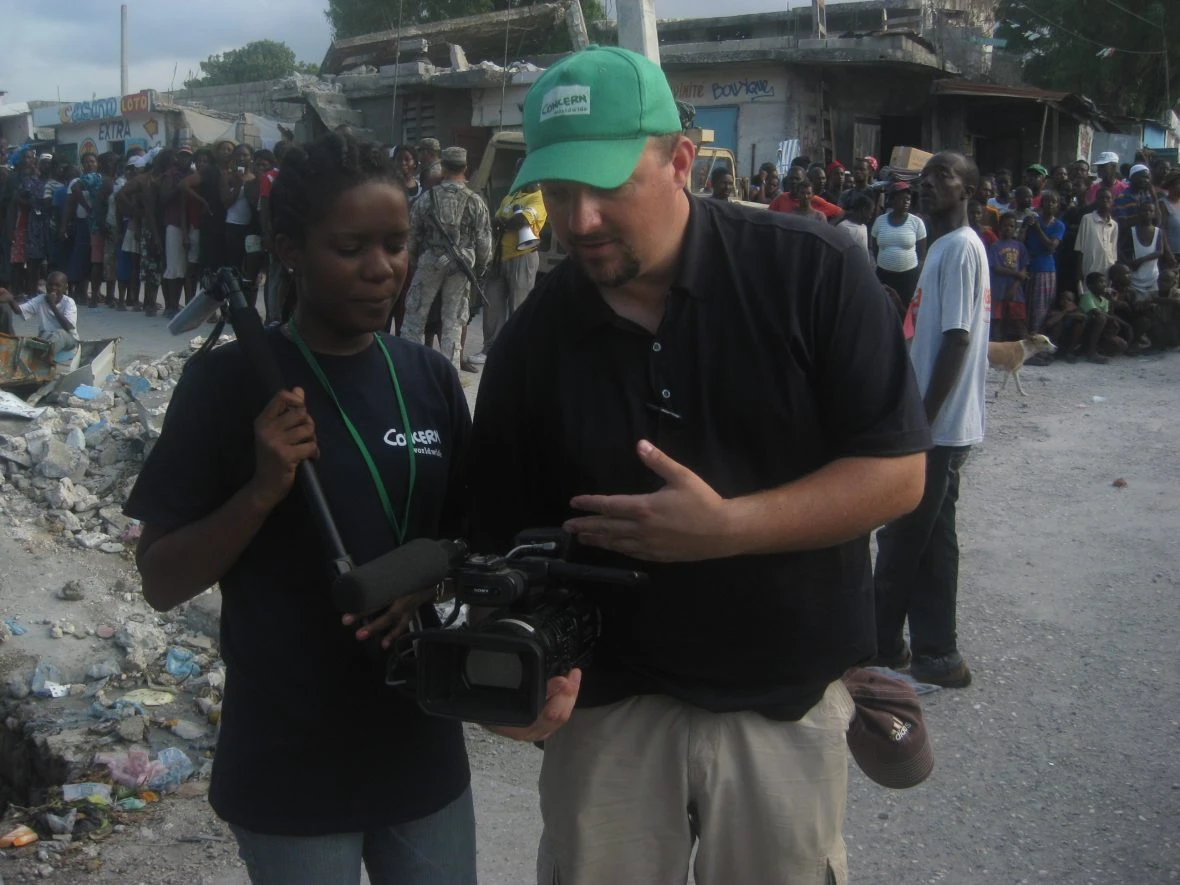
A place of peace and safe returns — with more to go
The Place de la Paix, a converted soccer stadium in Port au Prince's Saint Martin neighborhood, became a shelter for many who lost their homes in Haiti's capital city. The dense complex of hastily constructed shelters spilled over into a neighboring park and was home to nearly 20,000 people. It became a center point of Concern's urban response, a continuum that started with water and sanitation, and evolved to include child nutrition, aid distributions, the construction of temporary shelters, child-friendly spaces, solar lighting, cash-for-work, and ultimately, a return to safe structures in surrounding neighborhoods.
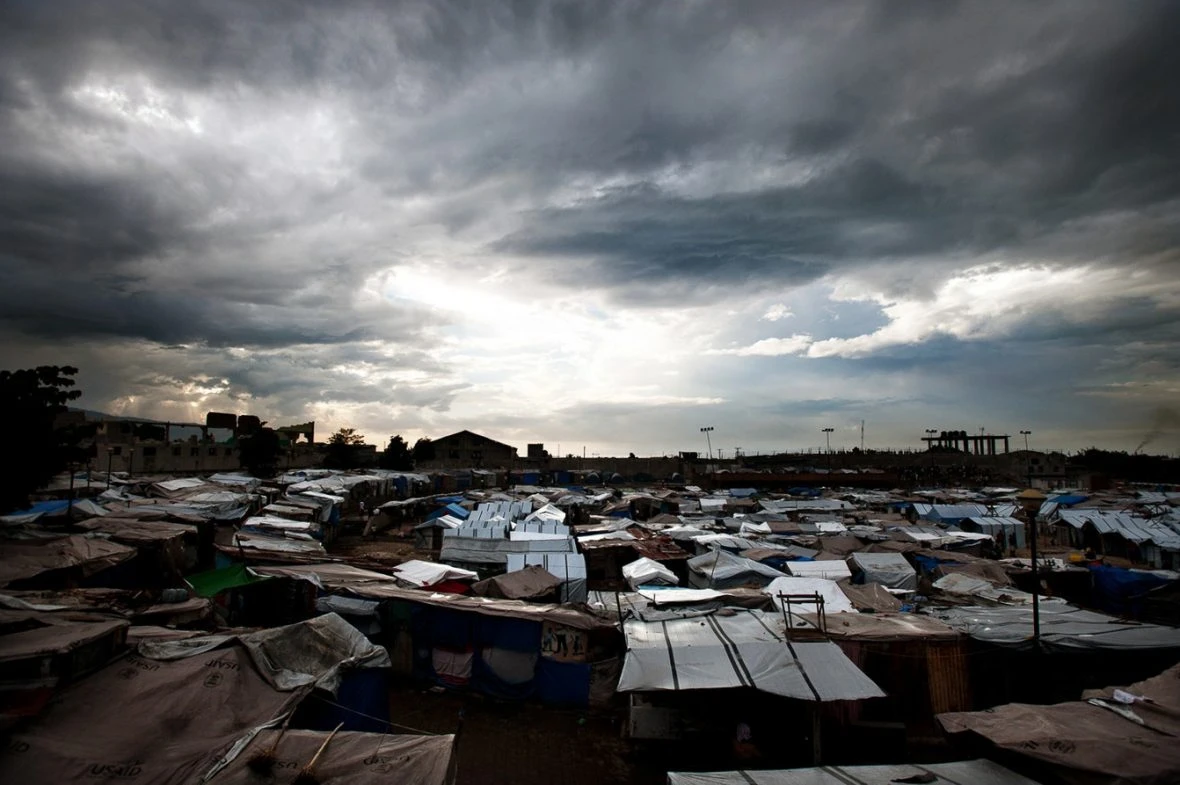
The Place de la Paix was one of hundreds of informal camps that sprung up across Port au Prince and beyond. In all, a quarter of a million homes had been destroyed and 1.5 million people were displaced. The camps would remain for years. Concern’s return-to-neighborhoods program helped families move out pf Place de la Paix and surrounding camps, and served as a model that others would follow. Many would find safe, secure homes, but the reality is most of the have simply relocated to vulnerable structures elsewhere. Some 30,000 remain earthquake-displaced as of 2019.
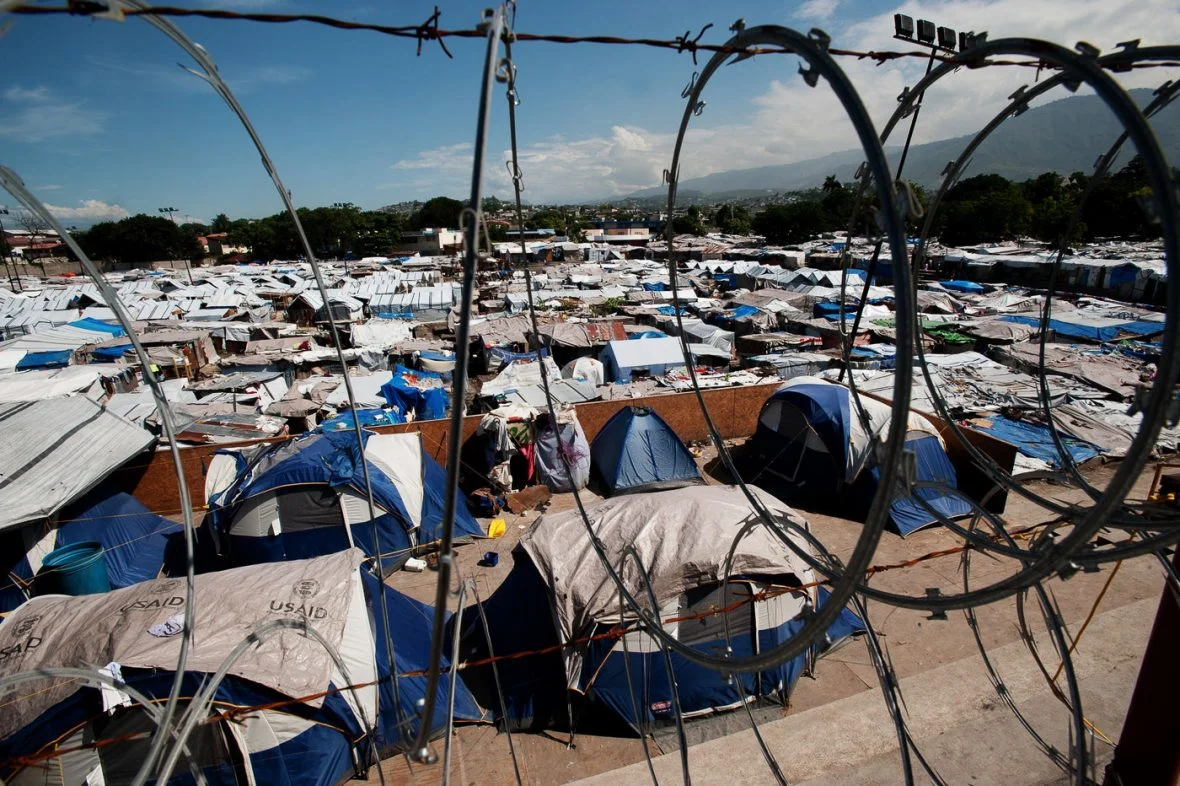
Protecting what's most precious
Children are especially vulnerable in the wake of a major disaster and one of Concern's most memorable interventions was a partnership with UNICEF and People In Need to establish child-friendly spaces.
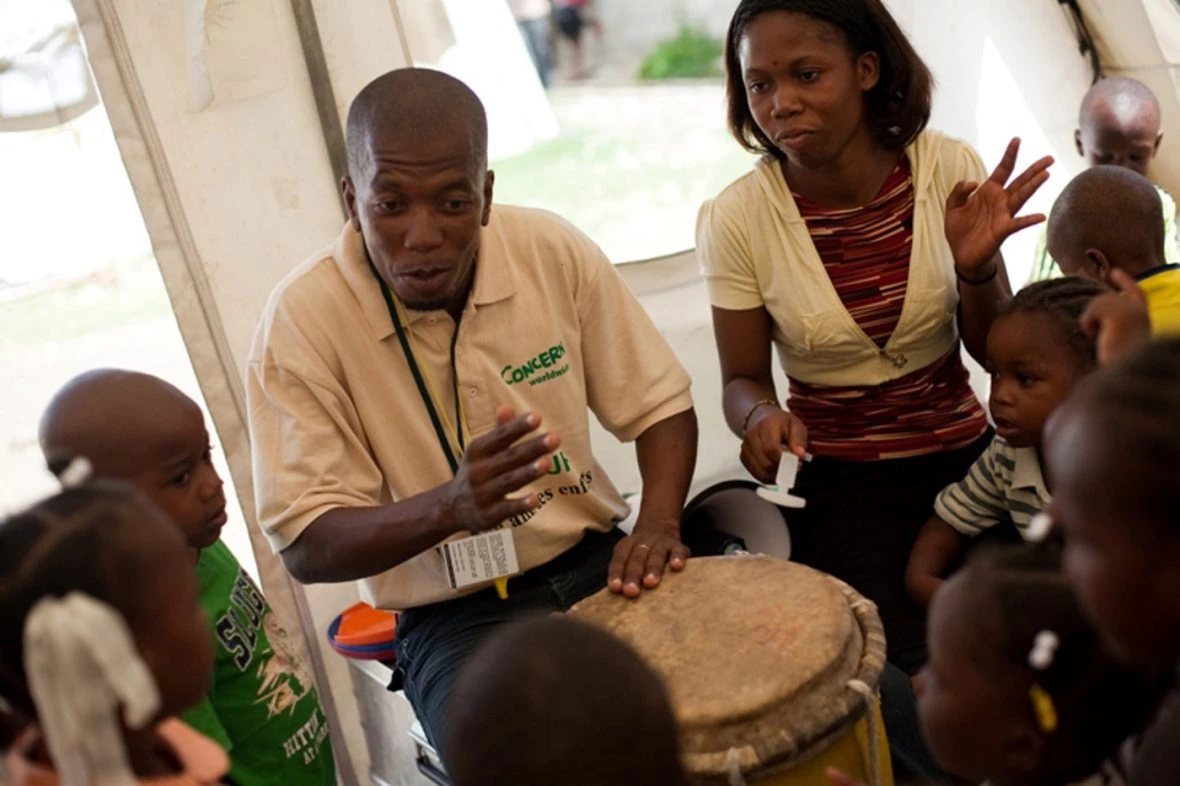
These were safe places where primary school-age children could find a few hours of refuge that included basic learning, health and hygiene messaging, and, most importantly, play.
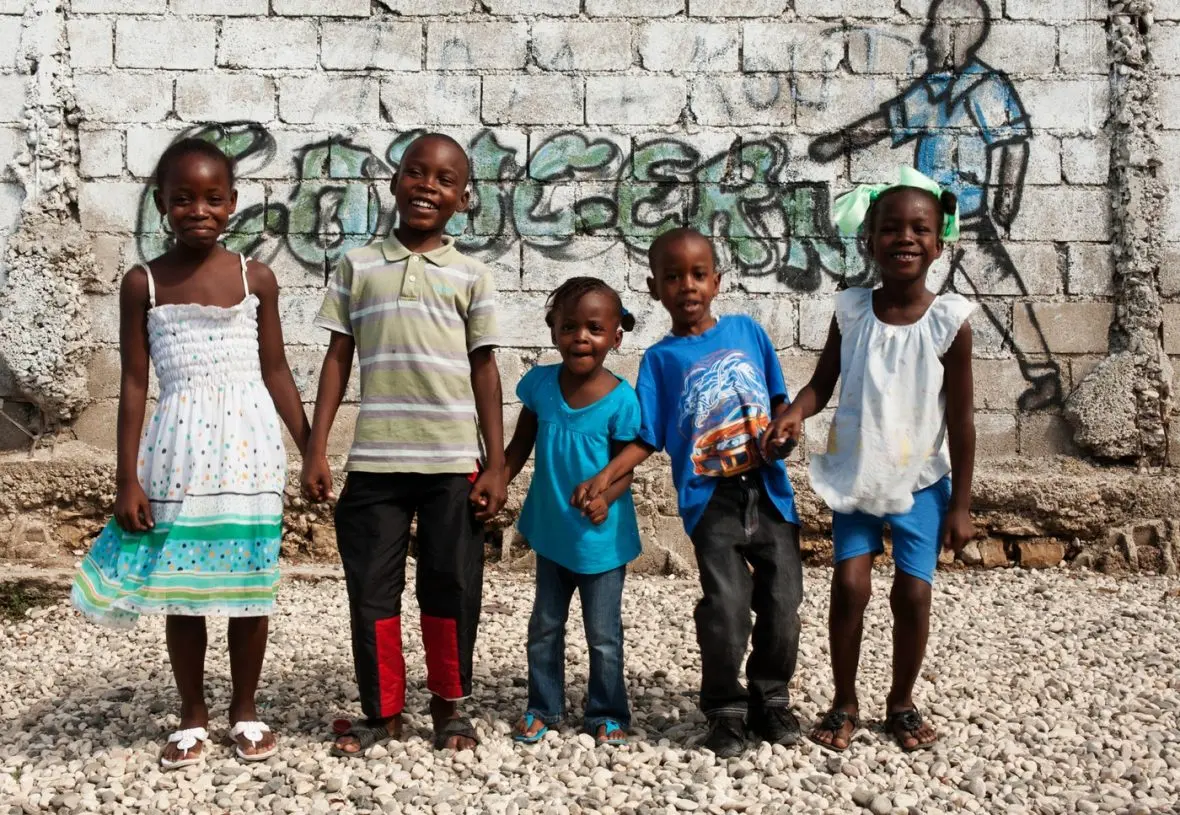
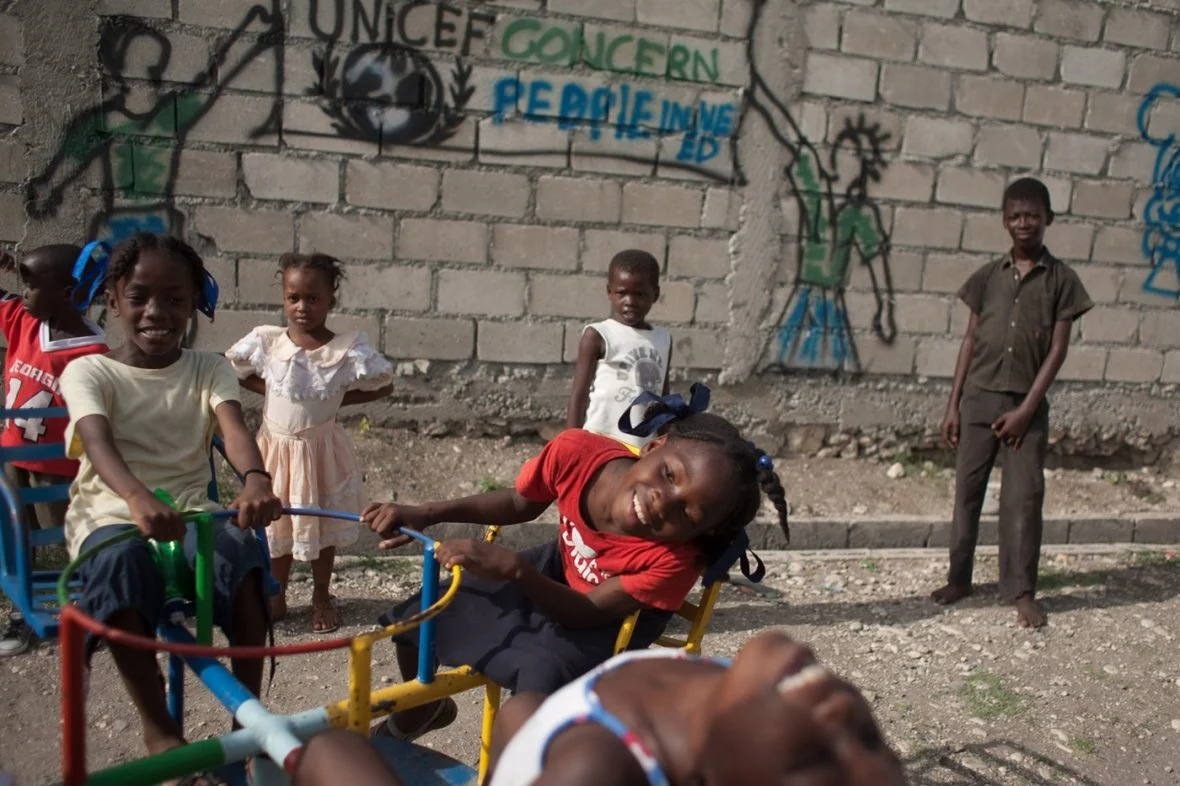
Transitional shelters in Tabarre
In Tabarre, just north of Port au Prince, Concern would lead the construction of temporary, transitional shelters to house 500 families, some 2,500 of the most vulnerable survivors -- most from the devastated hillside community of Bourdon. The first step in construction was the clearing, leveling, and drainage of the land, achieved in coordination with engineers from MINUSTAH, the UN peacekeeping mission in Haiti.

As part of a cash-for-work program, community members were employed to aid in the construction of Tabarre Issa's shelters, built on concrete foundations and made of high-quality timber frames reinforced to withstand hurricane-force winds. The basic design included two sleeping areas, a washroom with a latrine, and a small porch with an eco-cooking stove.

A similar construction effort, including leveling, drainage and the assembly of high-quality wood frame transitional shelters got underway at Place de la Paix camp in downtown Port au Prince. Concern construction supervisors, like Roland Souffrant, managed teams of community members as part of a cash-for-work program
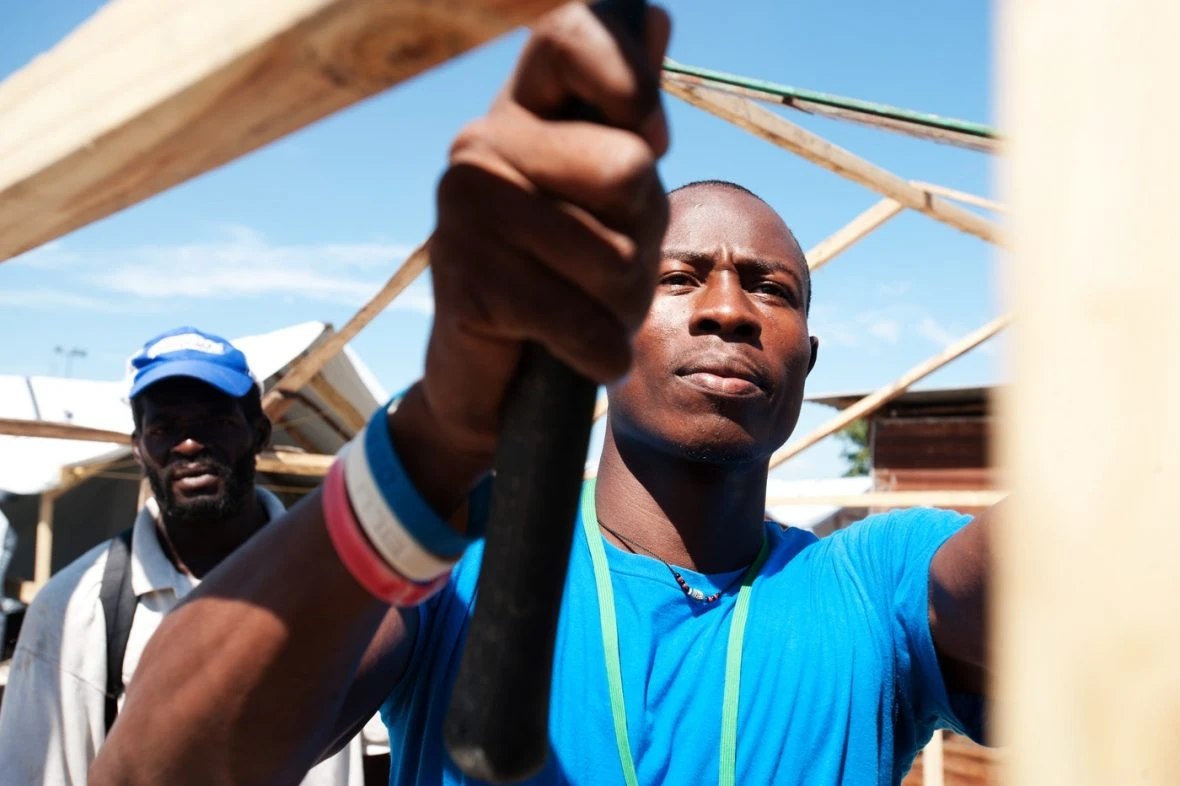
Refuge, resources, rebuilding…
The Tabarre Issa settlement, constructed and managed by Concern in partnership with both the host community and those displaced from Bourdon, grew into a small village where people who had lost everything could find safety, space, and basic resources with which to rebuild their lives.
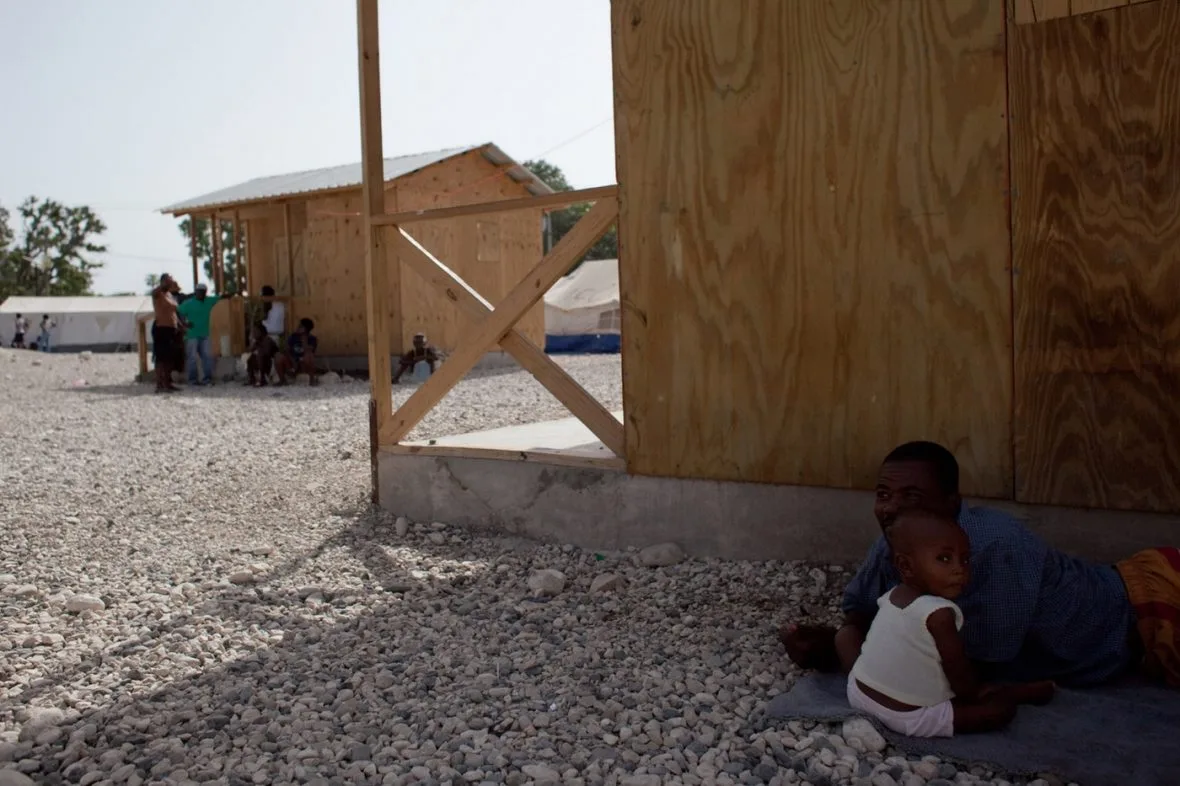

Kethlyne St. Previl moved into a tent in the Tabarre Issa settlement and by 2011, she was living in this new transitional shelter with three of her children. Her husband and two children were lost when their home in Bourdon crumbled around them. She told us:
"It is a savior living in this shelter. I have a really, really better life. When we were living in the tent, the children were dirty, it was so hot inside the tent, they couldn't stand heat and they used to cry out. We don't really know what the future holds for us, only God knows."
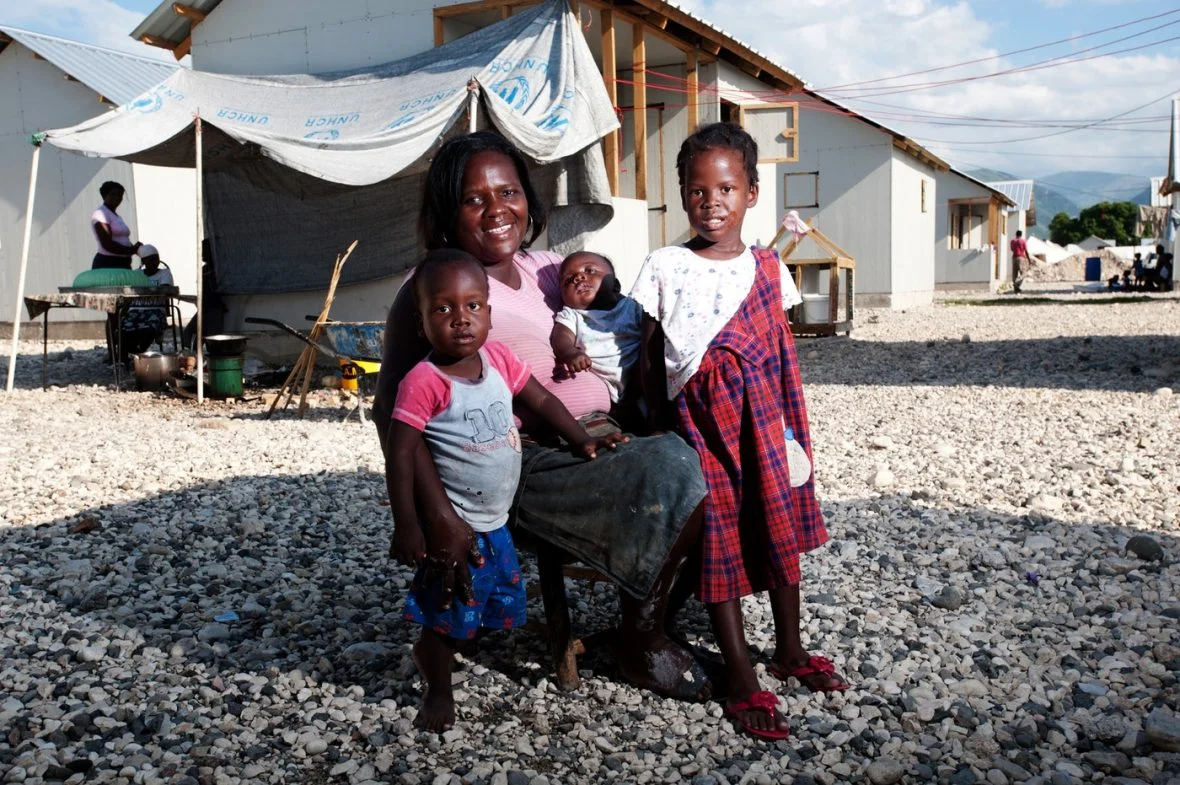
We met her again in 2012 at her Concern-supported business — a kiosk selling snacks on the camp's main access road. Business was good. Then, she updated us: “I am making it and I am getting my ideas together about continuing my business when I leave here.”
…and resilience
There is one word you hear from nearly any visitor who spends any amount of time among Haitians in Haiti: "resilience." A positive stereotype perhaps, but a stereotype nonetheless. It's based in the reality that Haitians have no choice but to confront and survive crisis after crisis.
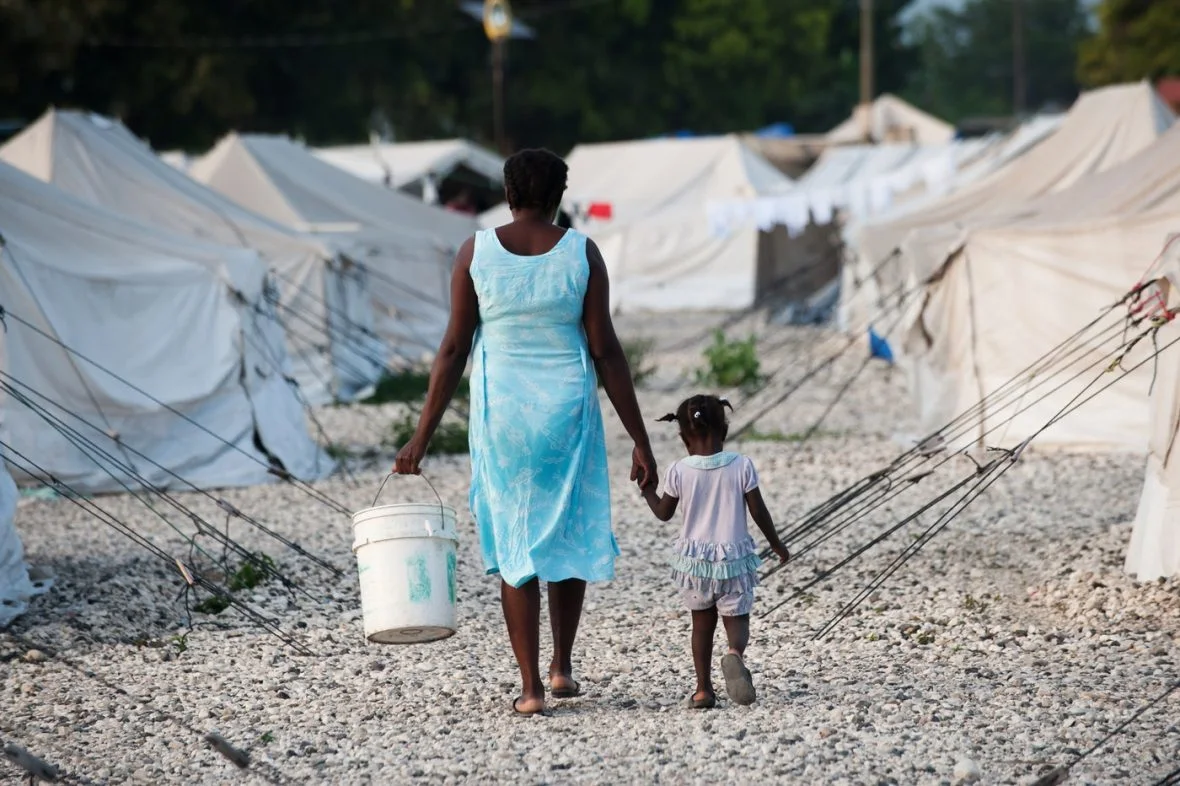
Indeed, the earthquake was soon followed by a cholera epidemic (2010-2019), which killed 10,000 people; Hurricane Sandy (2012), which left 200,000 people homeless; and Hurricane Matthew (2016), which displaced nearly 200,000 and decimated crops across the country's south.
As we enter 2020, a hunger crisis looms: 3.7 million people in Haiti are in urgent need of food assistance. The earthquake is just one chapter in Haiti's long and painful history.
Each disaster requires starting on the same journey anew: from relief to recovery to rebuilding to sustainable stability -- an elusive goal in this ongoing cycle. We know that lasting change is possible in Haiti and that much of the crises they face are either preventable or the risks can be drastically reduced.
Concern Worldwide is committed to staying the course, side by side with the people of Haiti, doing what it takes, for as long as it takes.
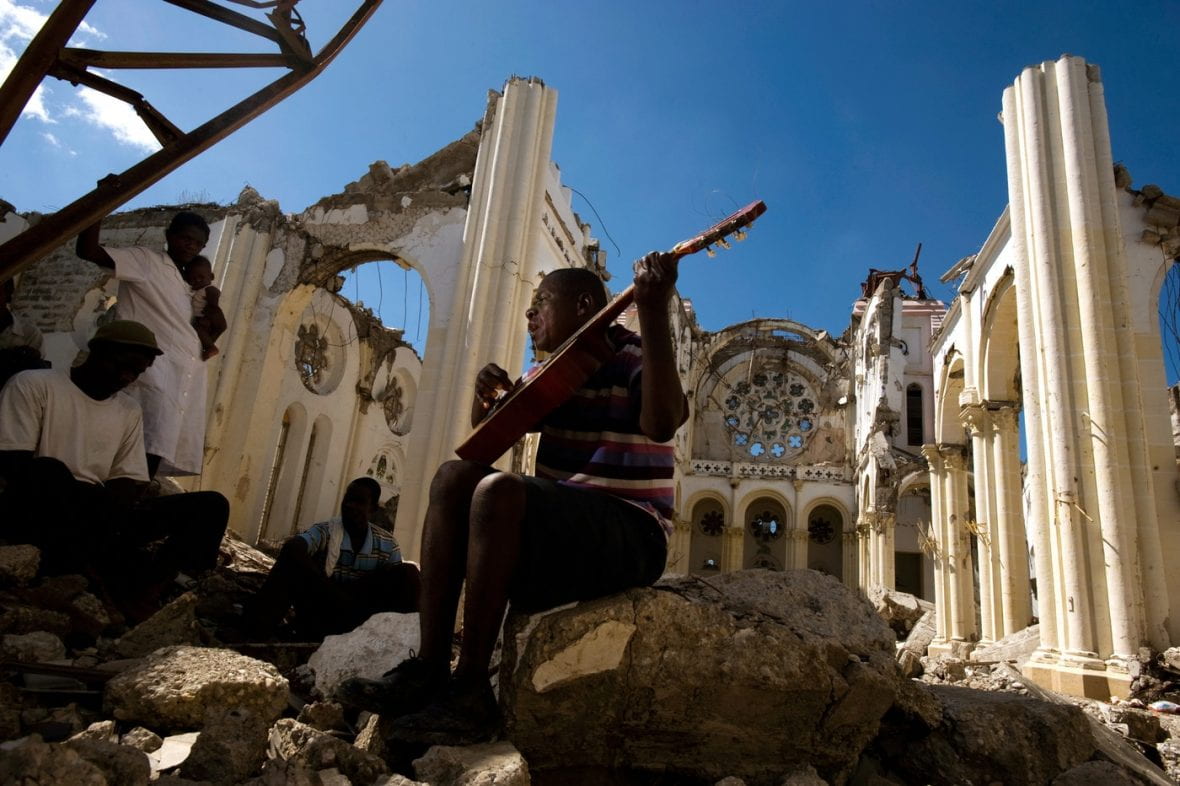
Coda
In October, 2010, Olince Calixte, then 63, was a blind man living with his family in a settlement adjacent to what had been the majestic Port-au-Prince Cathedral (Cathedrale Notre-Dame de l'Assomption). Each day, he would sit among the ruins, playing his guitar and singing songs, some about surviving the earthquake.

